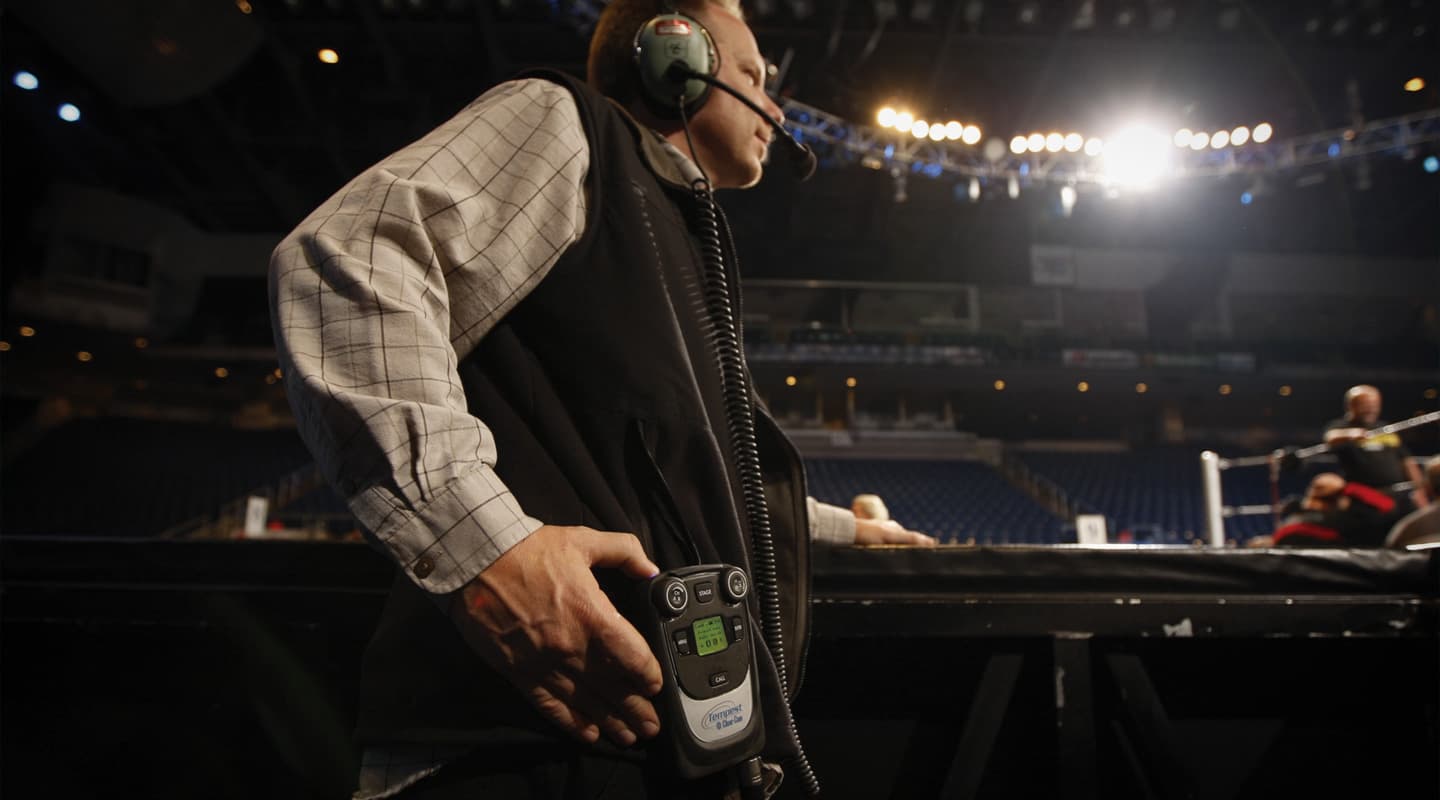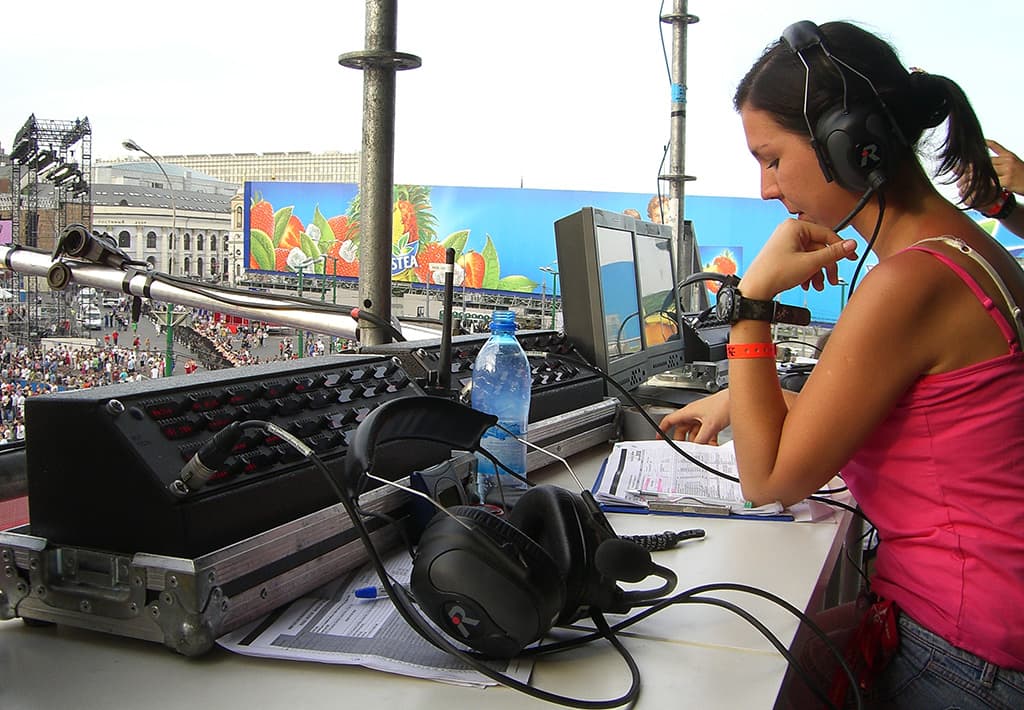
Can You Hear Me Now? Part 1
Effective production communications.
Tutorial:/ Cameron O’Neill
Despite being a critical part of every production, communications still seems to be a black art to many. In this article, and the ones that follow, I’m going to take a look at the different types of communication systems – from the sublimely simple to the ridiculously complex – and see which system best meets the needs of particular applications.
WHY COMMS?
In some simple production formats, if everything goes to plan, a communications system may turn out to be unnecessary and may actually never be used. I’m sure most of us can recollect shows where you waited until the band walked on stage, pushed up the faders, and you’re into it – never once saying a word to the crew on stage. But without a clear and reliable means of communication, it doesn’t take very much to happen before an event can come crashing down (sometimes literally) around your ears.
While working on a project a couple of years back we had an accountant calculate the cost of a major communications failure in a 2500-seat venue. The cost for a single system failure was estimated to be in the order of hundreds of thousands of dollars. Never mind the cost in public reputation for those involved.
Simplex, duplex, or something in between?: Before launching into a detailed description of a number of systems, I need to define a couple of terms, since ‘duplex’ and ‘simplex’ are used (and frequently misused) extensively in the communications world.
Full-duplex: A full-duplex system is capable of talking in two directions simultaneously. A telephone is a good example of a full duplex system: you can hear the person at the other end even while you are speaking.
Half-duplex: A half-duplex system can talk in both directions, but only in one direction at any time. Think about the walkie-talkies you used as a kid: when you were talking you couldn’t hear anyone else.
Simplex: A simplex system can only communicate in one direction, ever. A common example of a simplex system is the announcement system (often called ‘The Tannoy’ for obscure historical reasons) that broadcasts cast and crew calls from stage management to dressing rooms, crew areas and the green room. Since the listeners can’t reply, this is a ‘simplex’ system.
NOT EVEN SLIGHTLY SIMPLEX
However, there is one slight problem here; half-duplex and simplex have somehow become muddled and interchangeable in the modern communications lexicon. From now on, the convention I’ll be using is that a Duplex system is one that allows for full-duplex communication, whereas if I refer to a system as Simplex, I am actually referring to a half-duplex system. [I’m really glad we got that sorted out – Ed]. To go back to my examples, I will call a telephone system Duplex, but a walkie-talkie Simplex. On the rare occasions where I will refer to a single-direction system, I will use the term True Simplex.
Image courtesy of ClearCom

PARTYLINES
One of the simplest ways for a group to communicate is the shared partyline. Analogue partyline systems have been used in broadcast and production since the Stone Age of electronics. They appear to have developed out of the original military field telephones. These systems used simple, parallel-connection circuitry to allow any user to hear everything that anyone else says on that line. Modern military phones retain this as a capability; you can call individual users or you can join the ‘conference’ – a common line that anyone can talk on at any time.
There are many advantages to the partyline. They are almost always powered from a central unit by a phantom power arrangement, and they usually use a single-pair cable like a mic cable, avoiding the need to carry specialised cabling just for the comms. Plus, the simple circuitry means that there is very little to go wrong; with many early beltpack-style partyline systems continuing to work (albeit noisily) for two decades or more.
However, analogue partylines have a number of drawbacks. Since there is no central way to control individual levels, a particularly loud station can drown out other callers. Increasing the number of stations also increases the amount of background noise on the system due to the increased load on the base station. Also, due to the simple circuitry there is a very real (and very common) issue with feedback; when you listen to everyone speaking, that includes you.
DIGITAL PARTYLINES
Digital Partyline systems, which began to appear in 2004, have resolved a lot of the issues with their analogue predecessors. More complex digital signal processing circuitry means you can extract your own audio from your listen circuit (echo cancelling), the noise floor is dramatically reduced, and you can fit multiple channels down a single cable without the need for odd adaptors. However, since these systems usually run over the AES protocol which (like DMX512) specifies a 110Ω twisted-pair cable, they can’t be reliably used with standard mic cable or even star-quad cable.
More recently, advances in wireless technologies have allowed for the next generation of partyline systems to be developed. Wireless partylines use a digital transmission standard to allow the partyline beltpacks to be freed from the tyranny of cabling, thus increasing the freedom of the user, whilst drastically reducing the contents of their wallet.
WHERE WOULD YOU USE PARTYLINES?
Due to their simplicity and ease of use, partylines are most often deployed in areas where there are only a few users (less than 10 is my usual rule of thumb [Although the Editor has worked on many productions with 30+ beltpacks]). They are most commonly used in small and medium auditoriums, touring productions, or as an extension of a bigger matrix system.
Most Partyline systems allow for multiple channels or ‘loops’ to be controlled from a central location (e.g. a stage manager’s desk). This extends the usability of a Partyline system out to about 20 users, but beyond that you are limited by that central person’s ability to communicate effectively with everyone on the network.
Large-scale productions and big events require much more than is possible with even the most sophisticated Partyline setup, which is where the Matrix communication systems come in to play. Stay tuned, then, as we explore some more next issue.















RESPONSES